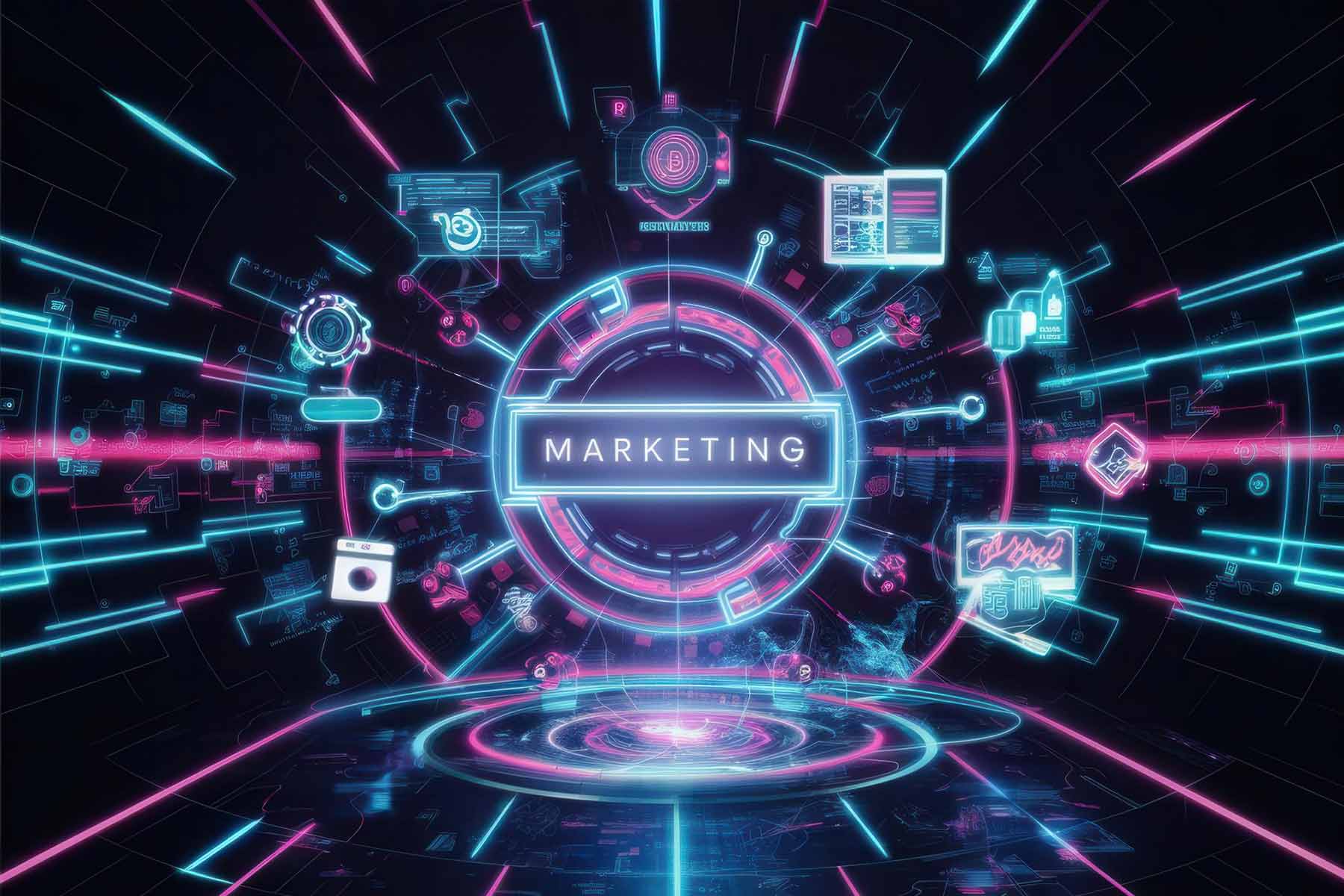At 7:00 AM, Tom sips his coffee and opens his inbox. There’s an email from a brand he visited two days ago. Ten minutes later, a push notification pings on his phone reminding him about a limited-time offer. That afternoon, a postcard from the same company lands in his mailbox with a personalized coupon. By evening, Tom visits the website again—and this time, he makes a purchase. This is the power of multi-channel marketing automation. It isn’t just about being everywhere. It’s about being everywhere with purpose.
For small and medium-sized business (SMB) owners and digital marketing agencies, setting up multi-channel automation can feel like orchestrating a symphony with no sheet music. But done right, it’s a transformative strategy—one that nurtures leads across platforms, boosts engagement, and ultimately increases ROI. In this article, we’ll walk you through what multi-channel marketing automation is, why it matters, and how to build a high-performing system that works around the clock. We’ll also show how companies like MailX2 are making it easier than ever to deploy powerful automation without overwhelming your team.
What Is Multi-Channel Marketing Automation?
Multi-channel marketing automation refers to the strategic use of software and workflows to deliver cohesive, personalized messages across multiple platforms such as email, SMS, social media, paid ads, direct mail, and your website—automatically. Rather than blasting the same message to everyone, multi-channel automation allows businesses to segment, target, and nurture leads based on behavior and preferences across each touchpoint.
According to Omnisend, campaigns using three or more channels earn 250% higher engagement rates than single-channel campaigns. The more touchpoints you have—if they’re aligned and automated—the more likely you are to convert and retain customers.
Why Multi-Channel Marketing Automation Matters
- Consumers expect it: 90% of customers expect consistent interactions across channels (Salesforce).
- Behavior varies by channel: Some people respond to emails, others prefer social or SMS.
- Increased conversion: Harvard Business Review found that omni-channel customers spend 10% more online and 4% more in-store.
- It saves time and increases ROI: Automation reduces manual effort and increases effectiveness by delivering the right message at the right time.
Core Components of a Multi-Channel Strategy
To get started, it helps to break multi-channel automation into four key components:
- Channels: Email, SMS, direct mail, paid ads, social media, push notifications, and your website.
- Technology: CRM systems, email platforms, automation software, customer data platforms (CDPs), and analytics tools.
- Data: Behavioral data, purchase history, engagement levels, preferences.
- Workflow Logic: Triggers, conditions, segments, and actions that move users through the funnel.
Step-by-Step: How to Set Up Multi-Channel Marketing Automation
Step 1: Define Your Goals
Before automating anything, determine what success looks like:
- More leads?
- Higher conversions?
- Increased customer lifetime value (CLV)?
- Lower cart abandonment?
Having clear KPIs keeps your automation strategy focused and measurable.
Step 2: Know Your Audience
Create detailed buyer personas. Understand their:
- Preferred communication channels
- Pain points
- Behavior patterns
Use this data to segment your audience. For example, customers who abandon carts might get a discount email, followed by a direct mail postcard.
Step 3: Choose the Right Tools
Your tools should align with your goals and scale. Consider these:
- CRM/Marketing Automation: HubSpot, ActiveCampaign, Mailchimp, Keap.
- Direct Mail: MailX2 automates postcard and letter campaigns triggered by digital behavior.
- SMS: Twilio, Attentive.
- Social Media Automation: Buffer, Hootsuite.
- Ad Retargeting: Facebook Ads Manager, Google Ads.
MailX2 stands out for offering a fully managed automation platform that merges email and direct mail workflows—ideal for SMBs without a big team or in-house experts.
Step 4: Map the Customer Journey
Sketch the ideal customer flow from first touchpoint to purchase and retention. Identify friction points. What happens after someone:
- Subscribes to your newsletter?
- Abandons a cart?
- Buys a product?
Each step should trigger a personalized action. For example:
- Email → SMS follow-up → Retargeting ad → Direct mail reminder.
Step 5: Build Your Workflows
Workflows are the engine of automation. A basic example:
Trigger: User signs up for free trial
Actions:
- Send welcome email (Day 0)
- Send educational video via SMS (Day 1)
- Show Facebook retargeting ad (Day 2-7)
- If inactive, send postcard via MailX2 (Day 8)
Use if/then logic to adapt based on behavior. For instance, if they open the email but don’t click, send a follow-up with a different CTA.
Step 6: Personalize Your Messaging
People engage more when content speaks to them. Use:
- First names
- Location-based offers
- Personalized URLs (PURLs)
- Dynamic product recommendations
According to Epsilon, 80% of consumers are more likely to purchase from brands that offer personalized experiences.
Step 7: Integrate Your Systems
Make sure your CRM, email platform, SMS provider, and direct mail platform share data. This ensures a seamless journey. MailX2 integrates with analytics tools and can be triggered by events like web visits or cart abandonment.
Step 8: Test and Optimize
Use A/B testing to refine subject lines, messages, timing, and channels. Review KPIs regularly:
- Open/click rates
- Conversion rates
- Time-to-purchase
- Cost-per-acquisition (CPA)
Step 9: Scale What Works
Once you’ve found winning workflows, expand them. Add additional touchpoints, or apply successful flows to other segments. Use customer feedback to refine.
Multi-Channel Marketing in Action: Sample Campaigns
B2C eCommerce Flow:
Trigger: User browses a product page
- Email with similar products (30 min later)
- Facebook ad with discount (24 hours later)
- SMS cart reminder (48 hours later)
- Direct mail coupon via MailX2 (72 hours later)
B2B Lead Nurture Flow:
Trigger: Prospect downloads whitepaper
- Welcome email + CTA to schedule demo (Day 0)
- LinkedIn ad (Day 1)
- SMS reminder (Day 3)
- Direct mail package with case study via MailX2 (Day 5)
- Email with testimonial video (Day 7)
Metrics That Matter
Track these to measure impact:
- Reach per channel: Are you touching enough segments?
- Engagement: Email opens, click-through rates, social interactions.
- Conversions: Per channel and workflow.
- Time to conversion: How long it takes from first touch to sale.
- Customer Lifetime Value (CLV): Increased CLV = long-term ROI.
Challenges and How to Overcome Them
1. Data Silos
Solution: Use integrations or a CDP to centralize data.
2. Channel Overlap
Solution: Use frequency caps to avoid spamming customers.
3. Resource Constraints
Solution: Start small. Even two channels (email + direct mail via MailX2) can yield impressive results.
The Role of Direct Mail in Multi-Channel Automation
Direct mail is often the missing link in marketing funnels. While email and social offer speed, direct mail delivers impact. According to the Data & Marketing Association, direct mail has a 4.4% response rate compared to 0.12% for email. When triggered by digital actions, it becomes even more powerful.
MailX2 lets you send automated, personalized mail pieces—like postcards, catalogs, or letters—within hours of a website visit or email open. It’s a tangible way to stay top-of-mind and drive action.
Benefits of Multi-Channel Marketing Automation
- Consistency: Uniform branding and messaging across platforms.
- Increased Conversions: Multi-touch workflows increase likelihood of purchase.
- Improved ROI: Better targeting = less wasted spend.
- Customer Satisfaction: Tailored experiences improve loyalty.
- Scalability: One setup, infinite reach.
Case Studies & Results
- A retail brand used a 4-channel flow (email, SMS, direct mail, retargeting ads) and saw a 35% increase in conversions.
- A SaaS company implemented MailX2 and increased demo signups by 22% through postcard follow-ups.
- An agency running campaigns for an insurance client boosted lead-to-policy conversion by 18% with automated mail + email flows.
Final Checklist
Before you hit “go,” make sure:
- Your goals are defined
- Buyer personas are complete
- Tools are selected and integrated
- Workflows are mapped and tested
- Personalization is in place
- Metrics are tracked and optimized
Final Thoughts
Setting up multi-channel marketing automation isn’t a luxury anymore—it’s a competitive necessity. The modern customer journey is nonlinear and unpredictable. To meet people where they are, you need to be agile, personal, and persistent across multiple touchpoints. Whether you’re an SMB owner or an agency leader, the path to growth runs through smart automation. Platforms like MailX2 make it easier than ever to orchestrate seamless, personalized campaigns across email, direct mail, and more—without increasing your workload. Are you ready to take your marketing from fragmented to fully connected?





